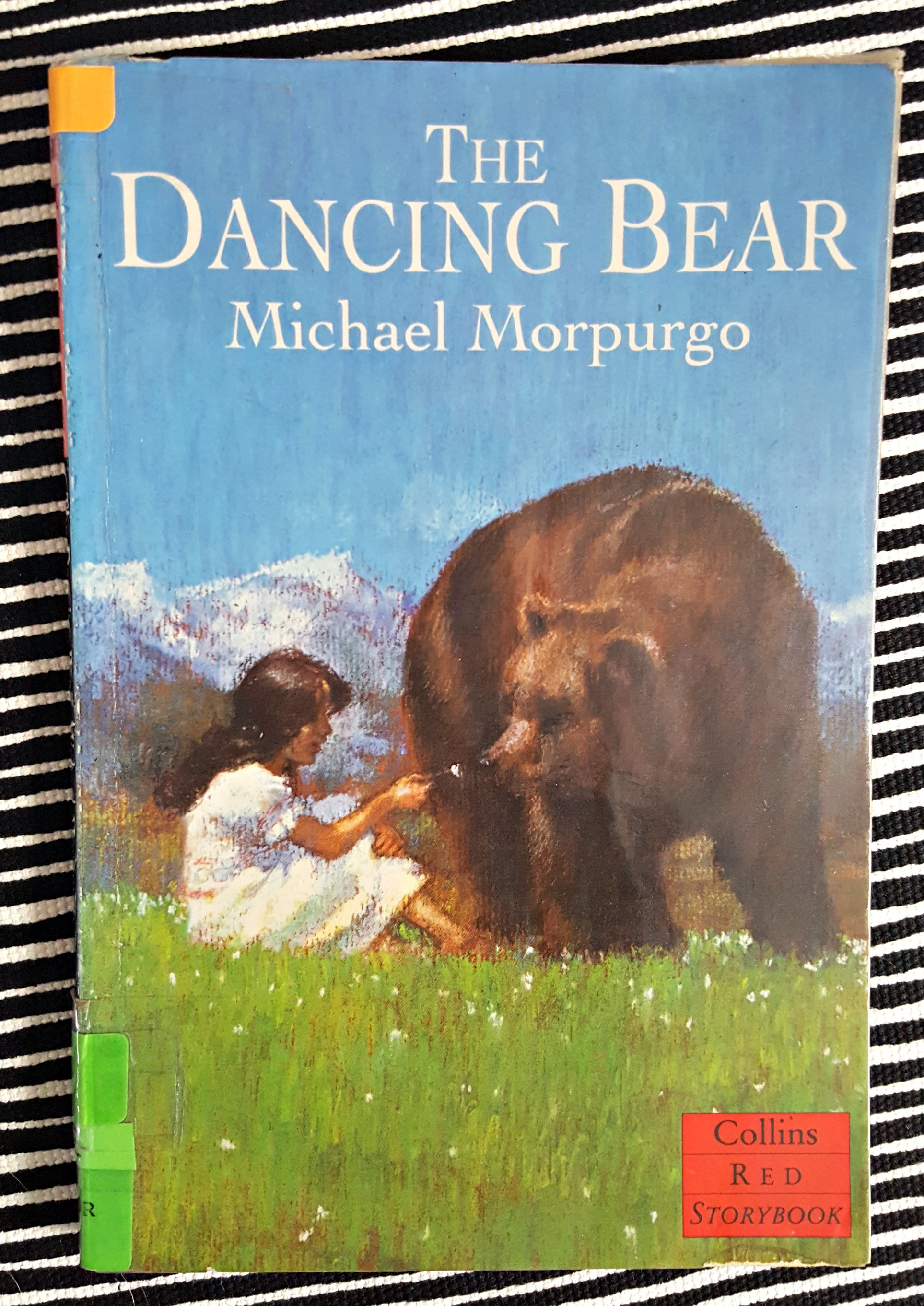Yesterday, while catching up on BBC news, a snippet about dancing bears flickered across the screen. Like many, the immediate thought of animal suffering almost drove me to switch channels. However, the compelling and compassionate voice of Dr. Amir Khalil from Four Paws, discussing bear sanctuaries in Bulgaria, held my attention. It served as a powerful reminder that the cruel practice of animal exploitation, including that of dancing bears often seen in “Dancing Bear Full Videos,” can be stopped.
Inspired by this, my thoughts turned to Michael Morpurgo’s children’s book, The Dancing Bear. It’s a recommendation I often make for young readers, lauded for its engaging narrative and important themes. Yet, reflecting on the reality behind the romanticized image of dancing bears often portrayed in fiction and, ironically, sought out in “dancing bear full videos,” I find myself questioning its message and missed opportunities.

The Dancing Bear by Michael Morpurgo Illustrated by Christian Birmingham Published by Harper Collins
The story introduces us to Roxanne, an orphan girl who discovers a bear cub. Her grandfather, motivated by profit, agrees to keep the cub, named Bruno, only when he sees potential financial gain. Roxanne and Bruno develop a strong bond. However, an incident leads to villagers demanding Bruno’s removal to a zoo. Roxanne passionately pleads to keep him, promising to ensure his safety and build a cage.
A cage is erected in the village square, and Roxanne’s grandfather capitalizes on Bruno’s presence with a donation box for “Bruno European Bear Help Save Threatened Species.” This spectacle attracts a film crew for a music video featuring a singer named Niki. Niki desires a dancing bear for his video, inquiring if Bruno can dance.
“Oh, he’ll dance all right,” said Roxanne’s grandfather, rubbing his hands. “That bear can do anything you ask, can’t he, Roxanne?” Roxanne said nothing. Her silent anger spoke volumes about the exploitation she foresaw.
The narrative then twists as the music video becomes a Pied Piper remake, involving the entire village. Roxanne, surprisingly, gets Bruno to dance during the video shoot, as he seems to respond to her singing with a “little jig.” The video is a success, Niki is thrilled, and Roxanne is propelled towards pop stardom. But what about Bruno, the supposed star of these “dancing bear full videos” in our imagination? Bruno dies in his cage. Alone. Was it from grief, starvation, neglect, or simply being forgotten amidst the human drama? Morpurgo leaves these crucial details untold, ending abruptly with a peculiar focus on a hat that doesn’t fit. The hat. Not Bruno’s fate, but a hat.
This ambiguous ending leaves a void. While the book receives praise and is used in classrooms, it deeply disappoints in its failure to address the core issue of dancing bears and animal captivity. Imagine a sentence or two acknowledging why Niki wanted a dancing bear, or a character objecting to Bruno’s confinement. This could have sparked essential conversations about the ethics of dancing bears and keeping wild animals captive. Instead, a child might conclude that bears enjoy dancing to music and that caging a wild animal is acceptable as long as you claim to “love it.” This romanticized view contrasts sharply with the harsh reality often depicted in “dancing bear full videos” that inadvertently surface online, revealing the cruel training methods used to force bears to “dance.”
Using The Dancing Bear in the Classroom: Beyond the Dance
If “The Dancing Bear” is part of your curriculum, consider Dr. Amir Khalil’s work with Four Paws and the sanctuaries they establish. Supplement the book with videos demonstrating the reality of dancing bears – not the entertainment version, but the painful truth. Even a short, one-minute video can effectively explain why dancing bears are a symbol of animal cruelty and why seeking out “dancing bear full videos” for entertainment can be unknowingly supporting a harmful practice. Use the book as a starting point to discuss ethical treatment of animals, contrasting the fictional narrative with the often brutal reality behind the demand for performing animals.
Another Morpurgo book, Mr Nobody’s Eyes, similarly falters in fully developing its animal character.

Mr Nobody’s Eyes by Michael Morpurgo Cover photograph Getty Images Published By Egmont
Here’s an excerpt from the Kirkus review:
Young Harry Hawkins–overwhelmed by misery and self-pity–runs away from his postwar London home with a chimpanzee as company. Harry’s pillars of stability are crashing: his father is dead in the war; his mother has remarried and (to Harry’s disgust) given birth to baby George; and Harry’s often in trouble at school. The “”den”” he’s built in the cellar of a bombed-out house is his only refuge; his only friends are an old circus clown (Signor Blondini) and Ocky (a trained chimp). When Harry finds Ocky running loose, he coaxes her into his den; subsequently flushed out, the pair escape pursuit by jumping a train for the seaside. In a climactic scene, Harry’s stepfather (who is really a brick, would Harry but see) appears on the beach in time to rescue Ocky from drowning. After a happy reunion between chimp and clown, Harry decides to turn over a new leaf. The characters here (even, disappointingly, Ocky) are drawn with traditional British understatement–it will take a discerning reader to appreciate the mild humor–but the plot is well-knit; and several scenes, especially Harry’s sojourn with gypsies camped near a field of war-surplus tanks, are startlingly vivid. Another unusual, well-told story by the author of King of the Cloud Forests.
This review accurately points out the underdevelopment of Ocky, the chimpanzee. The story’s credibility suffers from this, especially considering the title and cover that misleadingly suggest Mr. Nobody is the chimpanzee. A note at the end about circus animals or the endangered status of chimpanzees could have encouraged readers to consider Ocky as a character with needs and a natural habitat beyond performance. While classroom discussions can address this, a surface reading implies that chimpanzees are primarily valued as performers and guide animals, reinforcing the idea that Harry returning Ocky to the circus is the “right” action. This reinforces a problematic perspective, especially when contrasted with the ethical concerns surrounding animal performances often debated in discussions around “dancing bear full videos” and circus animal welfare.
Using Mr Nobody’s Eyes in the Classroom: Habitat and Home
When using “Mr Nobody’s Eyes,” connect it to themes of habitats, home, and family. Encourage students to question what makes a place “home.” Harry’s home is disrupted by war and family changes. Mr. Nobody ran away to join the circus. What is Ocky’s true home? What is a chimpanzee’s natural habitat outside the circus? Do chimpanzees live in family units like humans? Inquiry-based learning can enrich character understanding and foster critical thinking about how animals, particularly endangered species, are exploited for human entertainment. This broader perspective is crucial when discussing animal representation in literature and media, particularly in the context of historical practices like dancing bears and the modern consumption of “dancing bear full videos,” which can perpetuate harmful stereotypes and obscure the reality of animal suffering.


